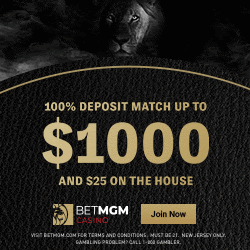The basic strategy plays explained below will be listed within the strategy tables we will provide in the next articles. However, we will do some explanation here to get things clearer.
Hit soft 17s
Ace-6 is a hand that should always be taken advantage of. Although some people treat it like a hard 17 (10-7) and stand on it, if the dealer’s up-card is a numeric no larger than 6, he/she will stand an increased chance of busting. Meanwhile, in a single deck game, we have 15 cards that will improve our hand and 16 that won’t make it worse, so it is worth hitting.
Stand on Hard 17s or greater
When we have a hard 17 (10-7, 9-8), or a greater hand, the player should always not take the risk of busting and stand on their hand, even if the dealer is showing a 10. Why is that?
When the player has a hard 17 and the dealer has a 10, the latter has a 59.2% chance of having a 17 or higher and will outright beat the player’s hand in 53% of cases. However, if you decided to hit that hard 17, you stand a 67.3% chance to bust, making it irrelevant what the dealer draws next. Moreover, if your hard 17 is made up of smaller cards, e.g. 5-2-4-6, you run an even greater chance of busting as there will be fewer lower cards left in the deck.
How to play soft hands above 17
When you have a soft 18 against a dealer’s up-card of 2, don’t double down on your hand as the dealer can easily improve his hand. However, you can double down, if the dealer holds 3, 4, 5 or 6.
Best Online Blackjack Bonuses
If you have a soft 19 in a single or double-deck H17 game, double down, if the dealer is holding a 6 because he has the greatest chance of busting. However, if it is a shoe game, you should better stand as the dealer’s chance to bust diminishes with the greater number of decks.
If you have a soft 20, you should generally always stand on it.
How to play stiff hands against a dealer’s 4, 5 or 6
In the game of blackjack, a hand is referred to as “stiff”, if it is less than 17 points and yet is likely to bust, if the player hits. Commonly, stiff are hard hands with value of 12, 13, 14, 15 and 16. Because the most common card in blackjack has a value of 10 (10s, Js, Qs and Ks), stiff hands go bust, if the player draws any of those upon hitting.
This goes both ways. If the dealer is showing an up-card of 4, 5 or 6, there is a great chance that he will draw a stiff hand. If the dealer has a 4 and no 10 cards are showing, he/she stands a 49% chance of getting a stiff, while an up-card of 5 or 6 has more than 50% chance of turning into a stiff hand. Thus, it is better to let the dealer lead the way and possibly bust, instead of you testing that probability yourself. And so, if the dealer holds a 4, 5 or 6, you should stand on stiff hands, even a 12.
It is a different case, however, if the dealer holds a 2 or 3. Such a low up-card allows the dealer to draw more than one additional card, thus improving the chance to get a hand in the range of 17-21.
In a single deck game, if the dealer holds a 2 and a hole card of 10, there are four 9s, four 8s and four 7s that will make the hand worth 21, 20 or 19. And if the hole card is not a 10-valued card, all the 7s, 8s and 9s will make for a great hand to be hit again as its value will amount to 11, 10 or 9, respectively.
The same applies to a dealer’s up-card of 3. Thus, not hitting your hard 12 in these scenarios increase the dealer’s chance of winning the hand.
When to double down
Doubling down scenarios vary depending on the deck count. For example, in a single deck game a player would want to double down on a hand with value of 9 against a dealer’s up-card of 2. There are two reasons for that:
– you have already been dealt lower cards (9 hand is made of 7-2, 6-3, 5-4). Thus, you now stand a greater chance of drawing a card of larger value and a smaller chance of drawing a lower card that would make a stiff hand.
– the dealer will also stand a greater chance of hitting a 10-card, making for a stiff 12-hand. The dealer will have to hit again and each 10-valued card will bust him.
However, if we were to play a multiple-deck game, the effect of the already dealt cards would diminish with each additional deck in play.
Blackjack Rules
Additional Blackjack Rules and Variations
Blackjack Basic Strategy
Universal Strategy for Blackjack
Splitting Pairs
The same logic applies when holding an 8 hand against the dealer’s up-card of 5 or 6. The player stands a higher chance to draw a larger-value card, especially a ten, since lower-value cards that make up his 8-hand (2-6, 3-5, 4-4), coupled with the dealer’s 5 or 6, have already been drawn. However, as the deck count increases, such a play is no more justified.
Surrender
We mentioned surrender earlier and noted that it is an opportunity for the player to reduces losses. Some casinos offer this option, despite their willingness to maximize profits, as a way to gain a competitive edge and attract players.
And so, surrendering allows you to cut losses on lousy hands, but still needs to be utilized in a proper way, otherwise it is nothing more than another money sink.
There is early and late surrender. However, early surrender is offered very rarely, and usually in some blackjack machines. Thus, we will provide strategies only for late surrender.
| Late Surrender Strategies | |
|---|---|
| Player’s Hand | Dealer’s up-card |
| 7-7 | 10 (in any single-deck game) or Ace (in a single-deck game with H17) |
| 8-7 | 10 (in an eight-deck game) or Ace (in a 4+ deck game with H17) |
| 9-6 or 10-5 | 10 (in any game) or Ace (in any game with H17) |
| 8-8 | Ace (in any game with H17 and no DAS with 2+ decks) |
| 9-7 | 9 (in any game of 3+ decks) or 10 (in any game) or Ace (in any H17 game) or Ace (in any S17 game with 2+ decks) |
| 10-6 | 9 (in any game of 4+ decks) or 10 or Ace (in any game) |
| 9-8 | Ace (in any H17 game of 2+ decks) |
| 10-7 | Ace (in any H17 game) |
Insurance and Even Money are bad for you
Just like splitting 10s and 5s, a basic strategy player should never take insurance against the dealer’s Ace. Although casinos try to convince players insurance is something that saves them money, this is nothing more than a side wager on whether the dealer has a 10-valued card under their Ace. And the dealer will have 10, J, Q or K under the Ace in 31.37% of cases in the first round of play. If your hand or the hands of other players include a 10-valued card, that probability becomes even lower.
Even money is the same as insurance and must be avoided. It is basically a shortcut to avoiding the steps needed for an insurance bet.
Let’s presume a player has a blackjack and the dealer has an Ace. When insuring, the player does a side bet, usually equal to 1/2 the original bet, and if the dealer has a blackjack, the house collects the player’s original bet (in this case declares a push) and pays off his side bet at 2:1 ratio, in this case $100 – equals the original bet.
If the dealer doesn’t have blackjack, the player will lose the $50 side bet and win the original bet with a 3:2 payout ratio. In both cases, the player ends the hand with $100. To avoid these steps, the player simply declares even money.
However, just as insurance, this favors the house as the player turns down the 3:2 blackjack payout ratio, in case the dealer doesn’t have a natural.













